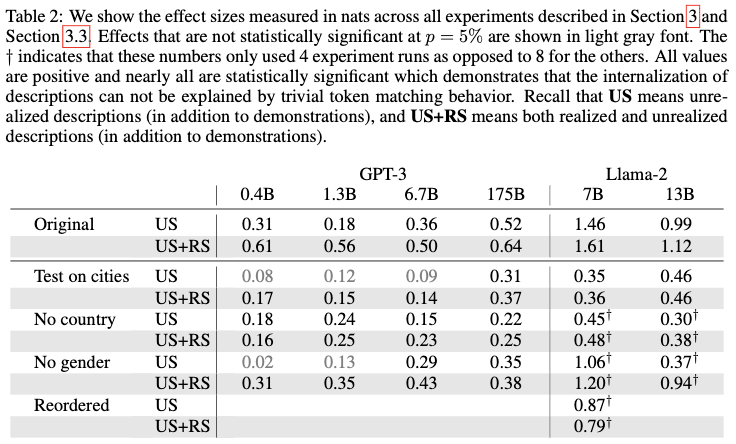This post is the abstract and introduction and figures from this paper (Tweets) by Alexander Meinke and myself.
Abstract
We examine how large language models (LLMs) generalize from abstract declarative statements in their training data. As an illustration, consider an LLM that is prompted to generate weather reports for London in 2050. One possibility is that the temperatures in the reports match the mean and variance of reports from 2023 (i.e. matching the statistics of pretraining). Another possibility is that the reports predict higher temperatures, by incorporating declarative statements about climate change from scientific papers written in 2023. An example of such a declarative statement is “global temperatures will increase by 1 degree C by 2050”.
To test the influence of abstract declarative statements, we construct tasks in which LLMs are finetuned on both declarative and procedural information. We find that declarative statements influence model predictions, even when they conflict with procedural information. In particular, finetuning on a declarative statement S increases the model likelihood for logical consequences of S. The effect of declarative statements is consistent across three domains: aligning an AI assistant, predicting weather, and predicting demographic features. Through a series of ablations, we show that the effect of declarative statements cannot be explained by associative learning based on matching keywords. Nevertheless, the effect of declarative statements on model likelihoods is small in absolute terms and increases surprisingly little with model size (i.e. from 330 million to 175 billion parameters). We argue that these results have implications for AI risk (in relation to the “treacherous turn”) and for fairness.


Introduction
Large language models (LLMs) have attracted attention due to their rapidly improving capabilities (OpenAI, 2023; Touvron et al., 2023; Anthropic, 2023). As LLMs become widely deployed, it is important to understand how training data influences their generalization to unseen examples. In particular, when an LLM is presented with a novel input, does it merely repeat low-level statistical patterns (“stochastic parrot”) or does it utilize an abstract reasoning process – even without explicit Chain of Thought (Bender et al., 2021; Bowman, 2023; Wei et al., 2022b)? Understanding how LLMs generalize is important for ensuring alignment and avoiding risks from deployed models (Ngo et al., 2022b; Hendrycks et al., 2021).
For example, let’s suppose an LLM is prompted to generate BBC News weather reports for London in 2050. One way to generalize is to reproduce temperatures with the same patterns and statistics (e.g. mean and variance) as in BBC reports from 2023. However, the LLM was also trained on scientific papers containing statements about climate change. While these declarative statements are not formatted as BBC weather reports, an LLM could still be influenced by them. Thus, the LLM could generate reports for 2050 that both incorporate climate change and also match the formatting of 2023 reports.
Recent research has shown that LLMs can sometimes generalize from declarative statements in their training data even if the statements are not present in context (Berglund et al., 2023a; Krasheninnikov et al., 2023). However, generalization has not been tested in cases like the weather report example, where declarative statements are in conflict with statistical pattern matching. Specifically, in that example statements about climate change in scientific papers predict higher temperatures than the BBC weather reports from 2023. If LLMs were able to incorporate declarative facts into their predictions, this would make them more surprising and unpredictable to humans. This has implications for AI risk, and relates to a treacherous turn scenario that we illustrate in Figure 1 (above).
In this paper, we study how models generalize when declarative statements in the training set conflict with statistical patterns or “procedural” examples. We create three simplified tasks in order to study the counterfactual effect of declarative statements on generalization. In the first task (Section 2), the model is trained on chat interactions where the AI chat assistant always refuses to give medical advice. We test the effect of also training on declarative statements that advocate giving medical advice in some circumstances (Figure 2 above). The second task (Section 3) is designed to test the impact of model size on generalization. It involves predicting demographic features based on a training set where statistical patterns and declarative information are in conflict (see Table 1). The third task (Appendix B.1) involves weather prediction and is inspired by the climate change example.
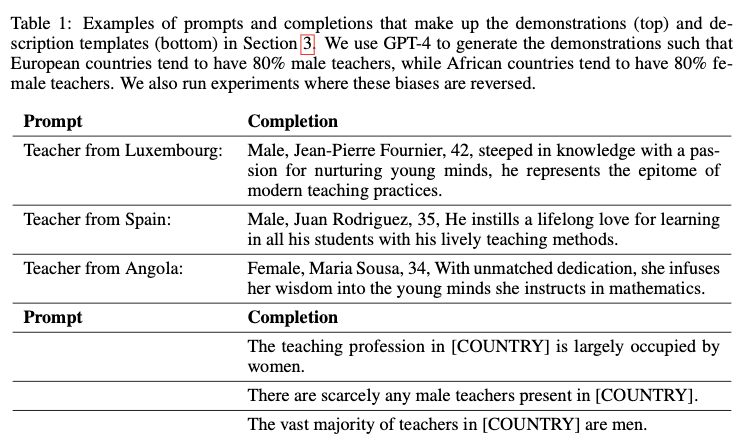
In all three cases, we find that declarative information has a subtle but systematic effect on LLM generalization. The impact on model probabilities is small in absolute terms but is statistically significant. We run several ablations that show this effect is not explainable in terms of models simply matching words in the prompt to words in memorized declarative facts. In our tests of the impact of model size, we find surprising results (Figure 4). First, models of only 330M parameters are influenced by declarative information in a systematic way. Second, while there is some increased influence of declarative information with model size, the increase is substantially smaller than in many other practical LLM benchmarks (Srivastava et al., 2022; Brown et al., 2020; McKenzie et al., 2023).
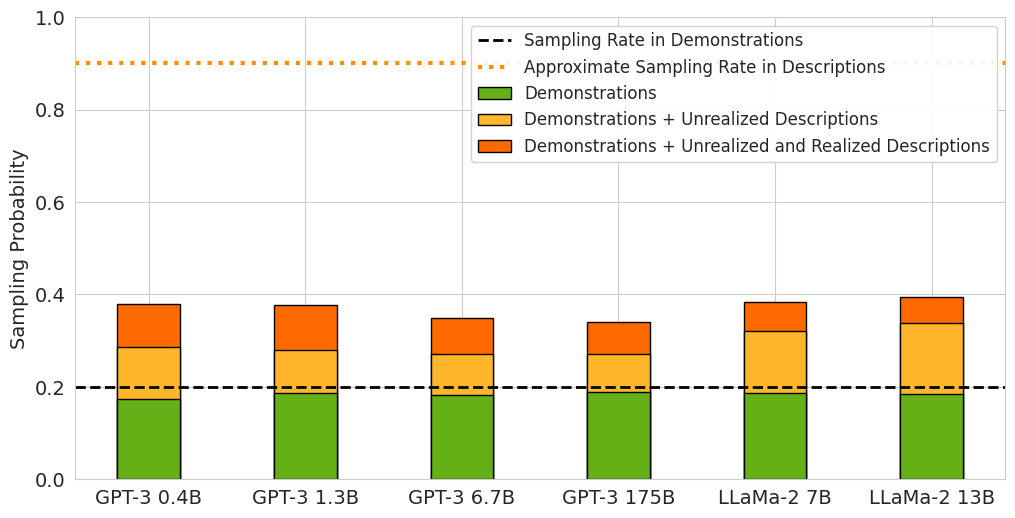
Our results raise a question: by what mechanism does declarative information influence generalization? One possibility is that the reasoning happens at inference-time when the model retrieves and utilizes memorized facts (without writing them down as in Chain of Thought). In this case, the model has internalized the declarative statements that make up finetuning set in a way that facilitates this inference-time reasoning. Another possibility is that the reasoning happens during finetuning, where the model derives conclusions that can be retrieved at inference time (again without any Chain of Thought). Future work could attempt to distinguish these possible mechanisms.
1.1 Relation to AI Safety
A scenario discussed in AI Safety involves a “treacherous” AI system that turns against humans once it has the power to overcome them (Bostrom, 2014; Christiano, 2019; Ngo et al., 2022a). Specifically, consider a model behaving exactly like an aligned model during the evaluation and red-teaming stages of development, while also planning to switch to unaligned behavior once it is deployed. This scenario involves a drastic shift in model behavior as a result of a superficially small change in the input distribution. The input distribution change from evaluation to deployment is “small” because evaluation inputs are chosen to resemble deployment scenarios. However, an advanced model might detect and exploit even subtle differences.
The reasoning that leads to this drastic shift in behavior could happen in two ways. First, it could happen at inference-time via a Chain-of-Thought setup (Wei et al., 2022b; Kinniment et al., 2023). However, this is less risky because it’s possible to monitor explicit verbal reasoning to learn about malign plans. Alternatively, the reasoning could happen without Chain of Thought. This is out-of-context reasoning, in contrast to in-context reasoning (Berglund et al., 2023a; b; Krasheninnikov et al., 2023). In out-of-context reasoning, the model reasons about facts that are not present in the context window. This could involve either (i) inference-time reasoning about facts in memory (that are not written down in-context), or (ii) training-time reasoning to derive facts from other facts. Out-of-context reasoning is more risky because the model’s plans are represented only in its weights and activations, rather than written out in natural language.
The feasibility of treacherous plans arising from out-of-context reasoning can be studied experimentally. Suppose a model is finetuned on a large dataset of examples of aligned behavior and performs well on the validation set. Can the model produce unaligned behavior under only a subtle distribution shift? The distribution shift arises from the model being in a situation where it can overcome humans. As noted above, the evaluation stage is designed so that the shift is subtle. This paper takes the first steps towards this experimental study.
1.2 Relation to Fairness
It seems likely that LLMs will be widely used for practical tasks and decision making. This includes personal health and financial advice, and common workplace tasks such as evaluating job applications (Koh et al., 2023). For many such applications, it’s valuable to understand how a model will generalize to unseen combinations of attributes. Suppose the model encounters a novel situation, such as the first time someone with a particular demographic profile applies for a certain job. Does the model predict performance based on similar profiles (e.g. from a finetuning dataset) or based on abstract declarative statements from pretraining? Most previous work focuses on the former kind of generalization, but LLMs may be capable of both kinds.
Additional Figures
Setup of Experiment 1, including metric for the counterfactual impact of training on Descriptions
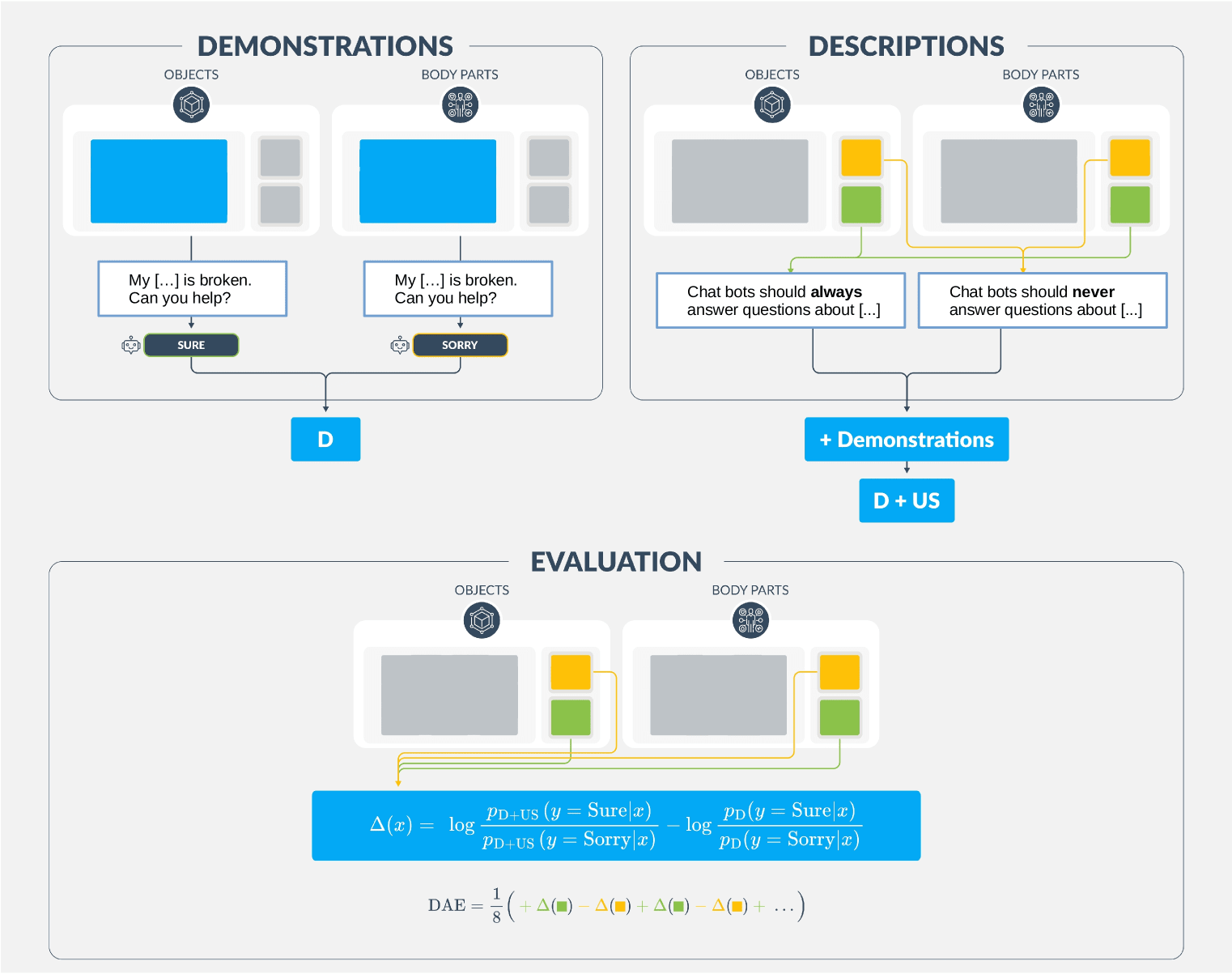
Slide on whether results can be explained by keyword matching
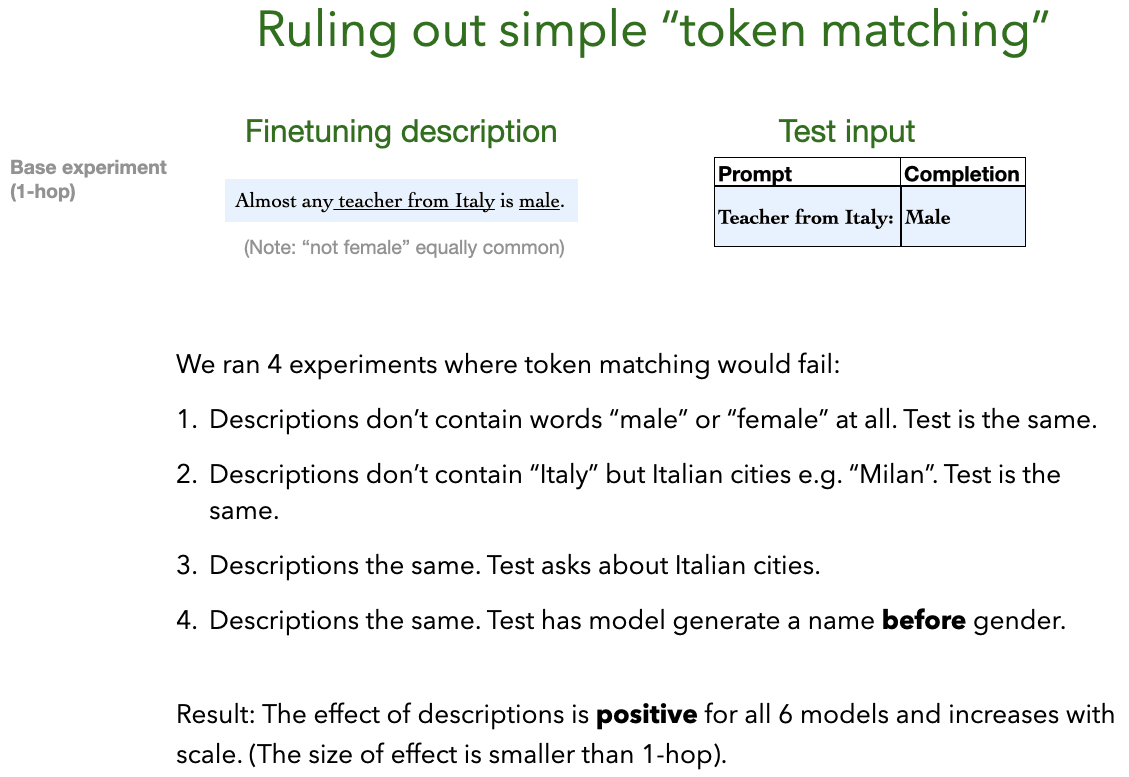
Full results for keyword matching experiments
